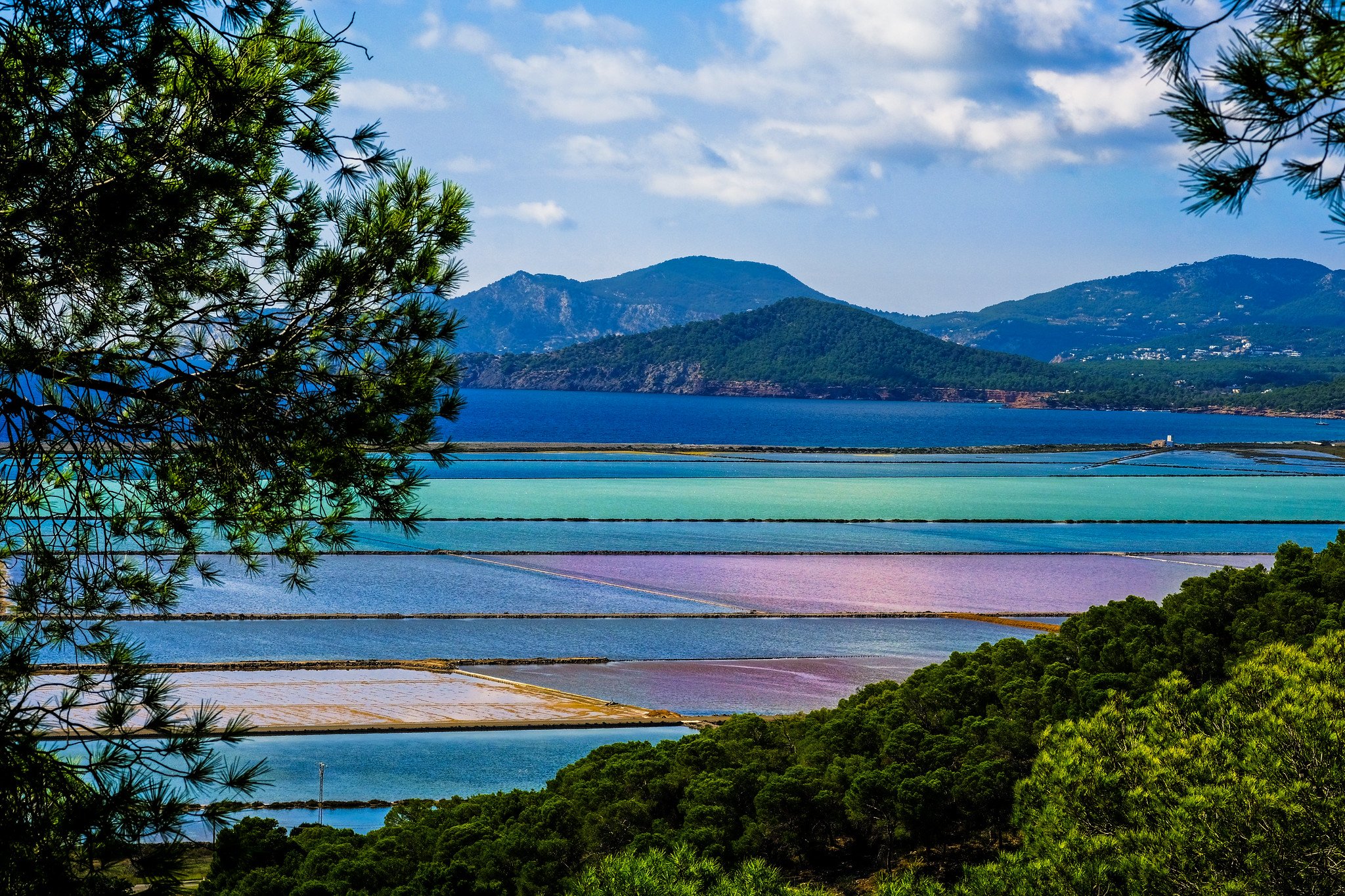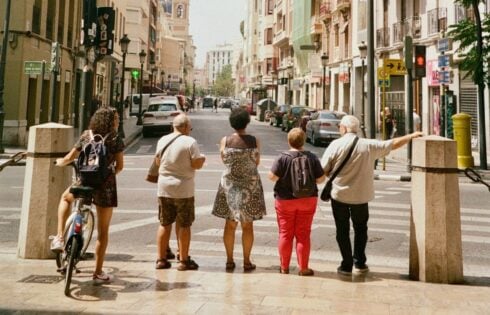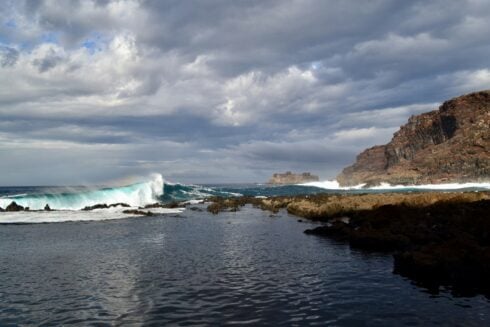IT’S approaching high Spring and the beaches of Ibiza would normally be filling up and the hip boutiques of Ibiza town inundated with English, American and German accents.
Instead there is merely a gentle trickle of European tourists circling the White Isle and you’re more likely to hear the cries of a curlew or the flapping wings of a flamingo, than a persistent house beat.
Best of all, you hardly need a reservation for a single restaurant, and you’ll be surprised to find more than a dozen people on any of its wonderfully varied beaches and coves.
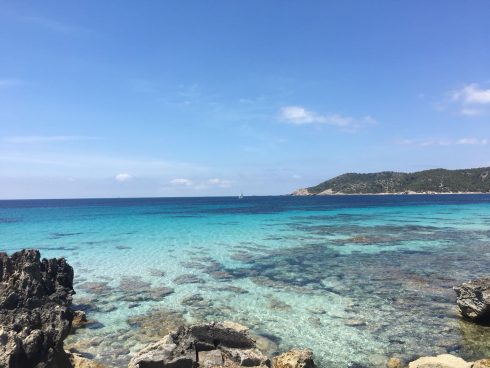
The island has never looked more beautiful and the interior is awash with wild flowers and blossom, and the comprehensive series of countryside walks and bike trails are better marked than ever before.
This is the Ibiza that often gets forgotten, with so many associating the island with pumping house music and partying to excess.
Forget the beach parties and concrete blocks of San Antonio, head inland, or to its lesser known corners, to find its best green spaces, many designated as Natural Parks.
Visiting Ibiza this spring, is like returning to the Ibiza of the sixties, when a handful of bespoke travellers upped sticks from northern Europe to set up homes on the island.
The roads are nearly empty and you can sightsee at forts or beauty spots without a crowd of tourists with selfie sticks driving you up the wall.
Take advantage of a once-in-a-lifetime chance to clamber up into Dalt Vila, the ancient citadel above Ibiza Town, with nobody in front of you.
This Unesco protected World Heritage Site is a true gem, which will take at least an hour to wander about, its warren of narrow cobbled streets and tunnels (yes, tunnels!) amazing in the extreme.
Chances are, towards sunset, you will almost see nobody, yet many of the galleries and museums will still be open and restaurants are soon set to stay open until 10.30pm (early by Spanish standards, but positively late for the Brits and certainly Scandinavians).
A fortress within a fortress, this is a solid stone redoubt that was once the centre of Ibosim, one of the key Mediterranean ports, first built by the Phoenicians.
Meaning ‘Upper Town’ Dalt Vila is certainly not for the faint hearted and it is decidedly hilly, so swap your heels for trainers.
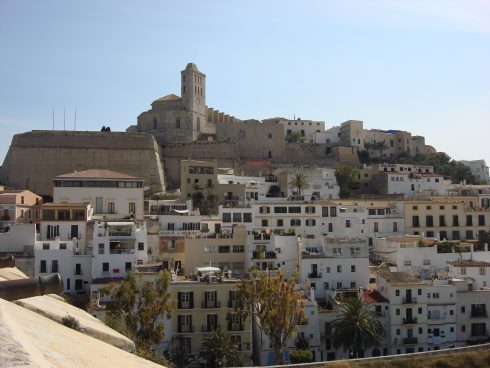
With nobody about, it feels somewhat eerie, actually edgy, strolling around. At least one part of it, just outside the main wall at the extreme east, is almost a slum, with squatters and drug dealers around, so be careful.
But once inside the walls proper, you will be amazed at how well it has been maintained and how much there is to see.
Head in via the Portal de Ses Taules, an impressive ramp and drawbridge, that you can imagine would have been anything but easy to scale during a time of battle.
Once inside, make sure to walk right to the top to see the Cathedral de Nuestra Senora de las Nieves and some incredible views, before taking a look around the Archaeological Museum, with its impressive collection of Phoenician relics, said to be among the best in the world.
Look out for the tunnels that take you up and down into the heart of the alcazar and ideally try and end up heading out of the back and then down the ring road back to the centre.
When you get back down you will be in the ritzy part of town with all the hip boutiques, including the likes of Paul Smith, Tous and Mayurka, which has been around for 30 years and stocks the likes of Balenciaga, Kenzo and Marc Jacobs.
For a totally different experience, head up the coast a little to the salt pans, where you can find not just an impressive area of natural beauty, but some incredible wildlife and a splendid walk with lunch bundled in.
This is part of the Ses Salines Natural park and where the famous Sal de Ibiza comes from.
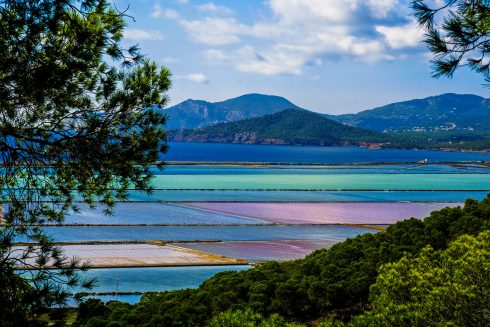
Salt has been continually exploited here since 600 BC by the Phoenicians – the commodity has brought great wealth to the island over the centuries – and there is some historical evidence today including an old milling wheel.
What is also very much in evidence is the impressive range of birds including sandpipers, curlews and stalks, that share the wetlands.The most exciting by far though are the flamingoes, when in season, that can be watched from a number of hides alongside the colourful pans. There is even a special visitor centre dedicated to them.
The place to start your saline adventure is near Restaurante La Escollera, where you will eventually have your lunch or supper. From here you walk down the stunning Platja des Cavallet beach to the ancient Torre de ses Portes watchtower, from where you can clearly see the island of Formentera.
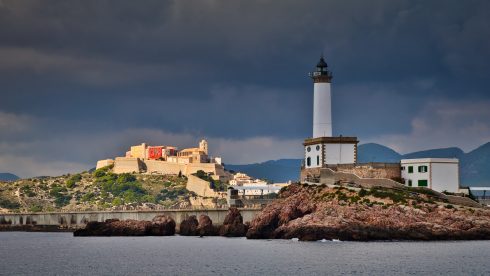
Be warned, the beach was the first in Ibiza to be declared a nudist beach so you may have to avert your eyes. It is also a keen area for the gay scene and a bar called Chringay, that can only be accessed by foot has long catered to this market.
From the 16th century tower you head south about two kilometres through a fascinating stretch of coastline full of hidden coves and inlets and fronded by a pine forest.
Ibiza at its very best with no construction, just nature, with Cala Pluma cove the real standout.
When you finally hit the El-900 road, head east, until you reach the salt pans that can be partly walked through, past two huge piles of salt, en route to being commercialised.
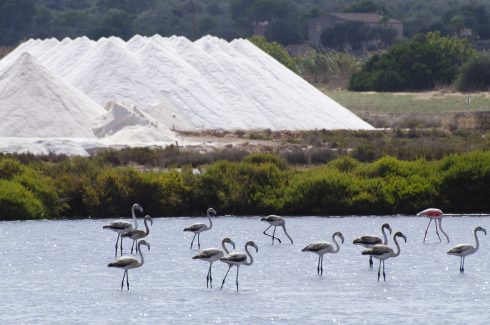
Eventually you will reach the interpretation centre at the Church of Sant Francesc, worth stopping for a drink at and to take in the flamingoes.
Your final stretch is along the sometimes busy Cami des Cavallet, but it is not far so bear with it, as you are nearly at one of the island’s coolest restaurants.
Restaurant La Escollera really is something special, a true locals’ favourite and I heard that time after time.
It sits in an incredible position at one end of Cavellet beach, with amazing views towards Formentera.
Now two decades old you can eat at tables overlooking the beach or on round day beds in any way you so choose, with sea bass in a salt crust my top pick.
The tradition is to drink a cold flute of Cava on arrival, although I was happy with a iced Mahou. It’s not cheap but the people-watching is free and there is plenty of that to enjoy.
Three great places to stay in Ibiza
Finca Legado is set in a secret valley just 10 minutes outside Ibiza Town. Set up by a pair of creatives from Holland, it has a very laid-back feel and counts on 3.5 hectares of extremely verdent grounds full of cacti, palms, fruit trees, wild asparagus and flowers. The rooms are ‘eclectic, artisan vintage’ and all extremely comfortable, focusing on top quality sheets and mattresses and the vibe is very hip. The saltwater pool is awesome.
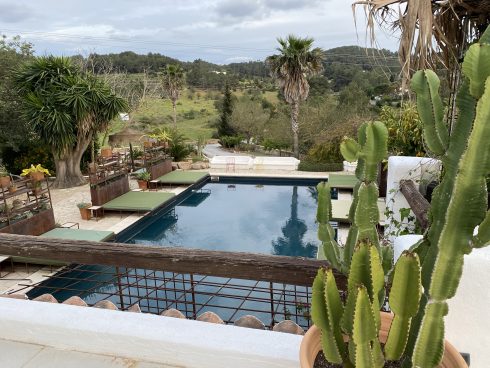
Hotel Mikasa is a stone’s throw from Ibiza Town overlooking the main Botofoc Marina. The views of the Dalt Vila old town are wonderful and you could spend all day watching the ferries coming in and out, plus graze on the excellent food in its terrace restaurant Kasamore. There are only 16 rooms of varied sizes and standards and some don’t have balconies, so do ask before booking.
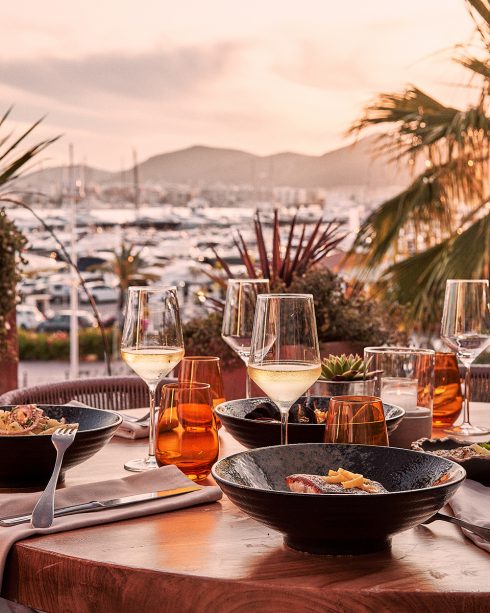
Cas Gasi is a luxury agriturismo in the heart of the island, a genuine address book secret, that is the escape for dozens of famous models and actors. It’s not cheap, but the organically-certified farm grows much of its vegetables, produces all its olive oil and has a superb restaurant on hand. Family-run, its staff are charming and friendly. READ REVIEW
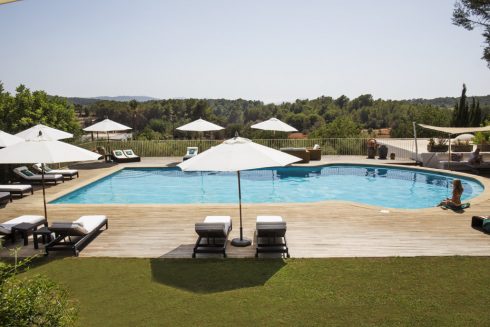
Three great beach restaurants open all year in Ibiza
Restaurant La Escollera sits in a privileged location at the end of Es Cavallet beach. Focusing heavily on seafood, this is the place to really kick back and plan a day of sunbathing, reading and chilling.
Hip and near the action, Nassau Beach Club sits on Playa d’en Bossa, close to Ushuaia nightclub and the Hard Rock hotel. It’s a very cool vibe with loads of day beds right on the beach. There’s some great sushi.
Es Boldado is one of those secret spots that you could not find by accident. Some two kilometres down a dirt track, the prize is easily one of the most breathtaking, romantic places to eat in Spain. Simple food, giant views towards the amazing Es Vedra islands.
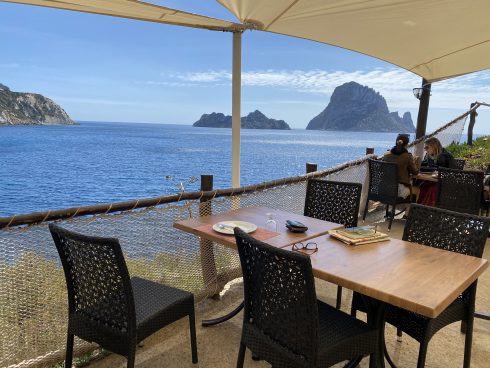
READ ALSO:
- Cas Gasi: Welcome to the hippest boutique hotel in rural Ibiza
- Visit our travel guide section
- Travel in the time of Covid: What it’s like to be the only hotel guest in one of Spain’s most touristy cities
Click here to read more News from The Olive Press.

